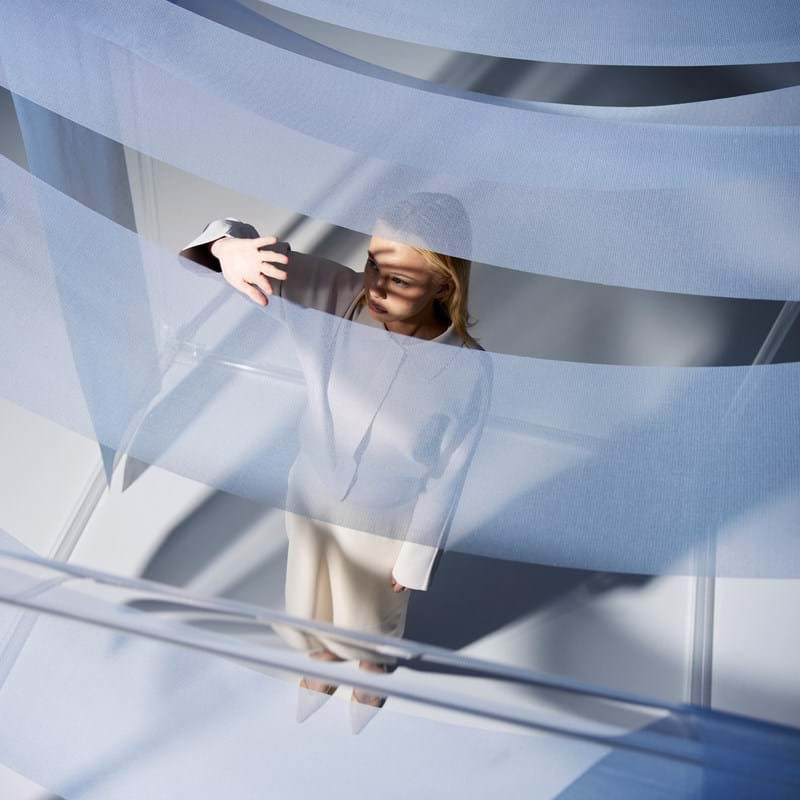Daylight affects both how we perceive a room – and how we feel in it. A good balance between light, visibility, and protection makes the environment more pleasant, more functional, and more sustainable over time.
By understanding and mastering natural light, we can turn it into a design tool. A simple guide can be found in the concept of visual comfort.
What is visual comfort – and why is it important?
Visual comfort is about creating balance in the room. It is when the light is pleasant for the eyes, while still allowing us to look out, without glare, misplaced reflections, or overly sharp contrasts.
Since up to 80% of our sensory impressions come through sight, a carefully considered light balance is crucial for how we feel in a space.
Three useful factors for visual comfort are glare control, visual contact with the outside, and daylight utilisation:

Glare control
Glare control is about reducing the risk of being dazzled by direct sunlight or of a room being dominated by sharp light contrasts.
The human eye is highly adaptable and generally copes well with high brightness – such as when stepping out into summer sunshine. However, large differences in contrast are quickly perceived as disturbing, for example when the light from a window is significantly stronger than the light at a desk.
To soften the brightness from the window, a textile that reduces incoming light is needed. In general, a dark textile works better than a light one, even when the construction is the same, since dark colours absorb more light while lighter ones tend to reflect and transmit it.
With the right textile in the right place, it is possible to control the inflow of light – without having to shut it out completely.

Visual contact with the outside
The concept of visual contact with the outside is about being able to look out without, at the same time, feeling observed. Since visual contact with the outside world helps us to orient ourselves, understand the passage of time, and feel connected with what is happening beyond the room, it contributes to a healthy and beneficial sense of control.
Did you know?
A dark, thin textile often provides a better view out than a light one. This is because light textiles more easily reflect light back towards the eye, creating a veil that makes it harder to see outside.

Daylight utilisation
Daylight utilisation is about maximising the use of natural light in a building. It is a central aspect of sustainable architecture, lighting design, and, to some extent, energy efficiency.
Conscious use of daylight can also promote people’s physical and mental wellbeing by creating bright, pleasant environments that support circadian rhythms and reduce the need for artificial lighting.
Measurable comfort
To make it easy to find the right textile for every type of environment, all our hanging textiles are classified according to glare control, visual contact with the outside, and daylight utilisation. We have based this on a standard that measures visual comfort, with tests carried out in an external laboratory.

Visual comfort in practice
Work in layers
Choose materials according to need and feel free to combine several layers of textiles – think sheer curtains together with denser, more light-dampening ones – to regulate the inflow of light depending on the time of day and activity.
Place strategically
Use the right product in the right place to optimise the lighting environment, and select different solutions for different orientations. See our quick guide to daylight and orientation.
Control the flow of light
With thoughtful placement of textiles at different heights and angles, it becomes possible to work with the light – directing it where it is most useful, or screening it off to avoid glare.
The role of daylight in our wellbeing
Daylight is a vital part of the human living environment. It regulates our circadian rhythm, affects our mood and hormones, and has a direct connection to both mental and physical health.
Research shows that access to natural light during the day can improve concentration, reduce stress, and even enhance sleep quality.
In Nordic climates, where the amount of daylight varies greatly throughout the year, it is especially important to let in as much daylight as possible without compromising comfort. It is about using the light and creating spaces where natural daylight can flow in – distributed in a way that feels comfortable for the eyes.
With the right textiles, the positive effects of daylight can be reinforced: softening and filtering the light, directing it, and adjusting the amount according to the time of day and the function of the room.
RECOVERY AND FOCUS
Studies show that patients with access to daylight recover more quickly and require less pain relief. In offices, the right lighting environment can improve both productivity and job satisfaction. And in educational settings, the right balance of light can enhance learning and concentration.
Design with daylight
Choosing a textile is not the same as shutting out the light – but rather shaping it. A dense, light-dampening textile can give people the option to draw it across when they would otherwise be dazzled by the sun, while sheer textiles filter, shape, and frame the light within a space.
Framing a room with the right hanging textiles is a way of designing the experience of the room – just as colour, materials, and furniture do.
